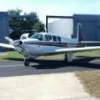-
Members Online
- Kelpro999
- T. Peterson
- Sabremech
- gabez
- madjano
- Scottknoll
- danad
- TCC
- Rwsavory
- amillet
- Ragsf15e
- Patrick Horan
- KLRDMD
- CL605
- Scooter
- Lax291
- Daily
- pkellercfii
- jetdriven
- marcusku
- Flash
- FlyingDude
- Mark89114
- gmendoza
- Blaze
- Vance Harral
- Bearcreek
- blankc
- takair
- Guy123
- toto
- adverseyaw
- Planegary
- ArtVandelay
- Utah20Gflyer
- Fly Boomer
- FoxMike
- MDMooney
- Glenn
- KSMooniac
- PilotX
- jeremyc209
- BillyT0020
- M20F


Recommended Posts
Join the conversation
You can post now and register later. If you have an account, sign in now to post with your account.